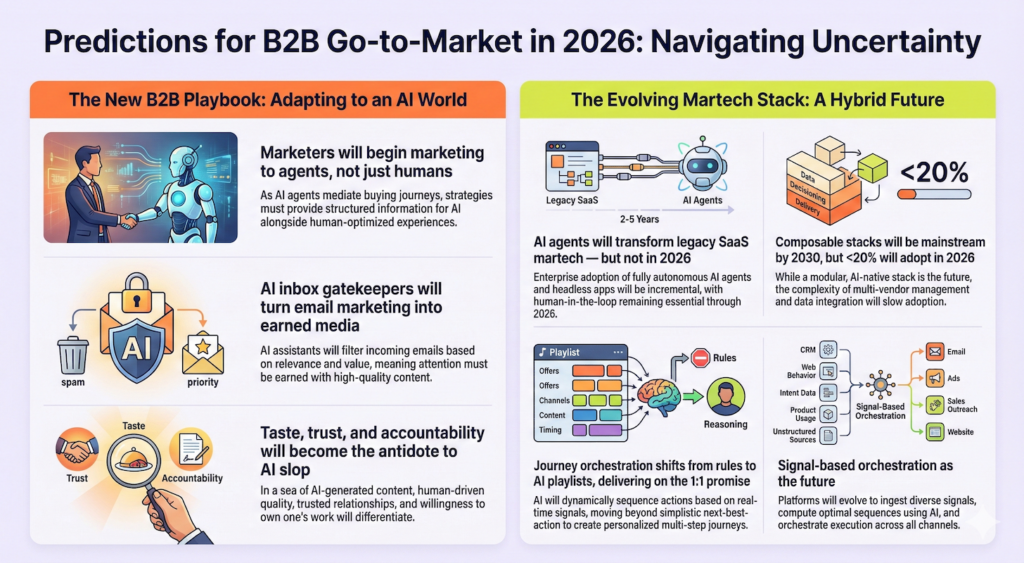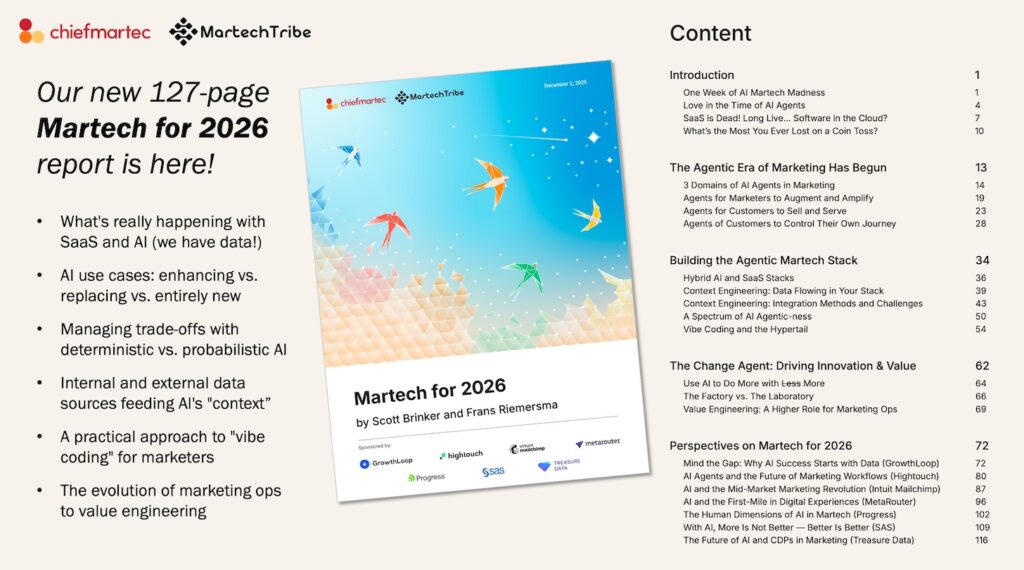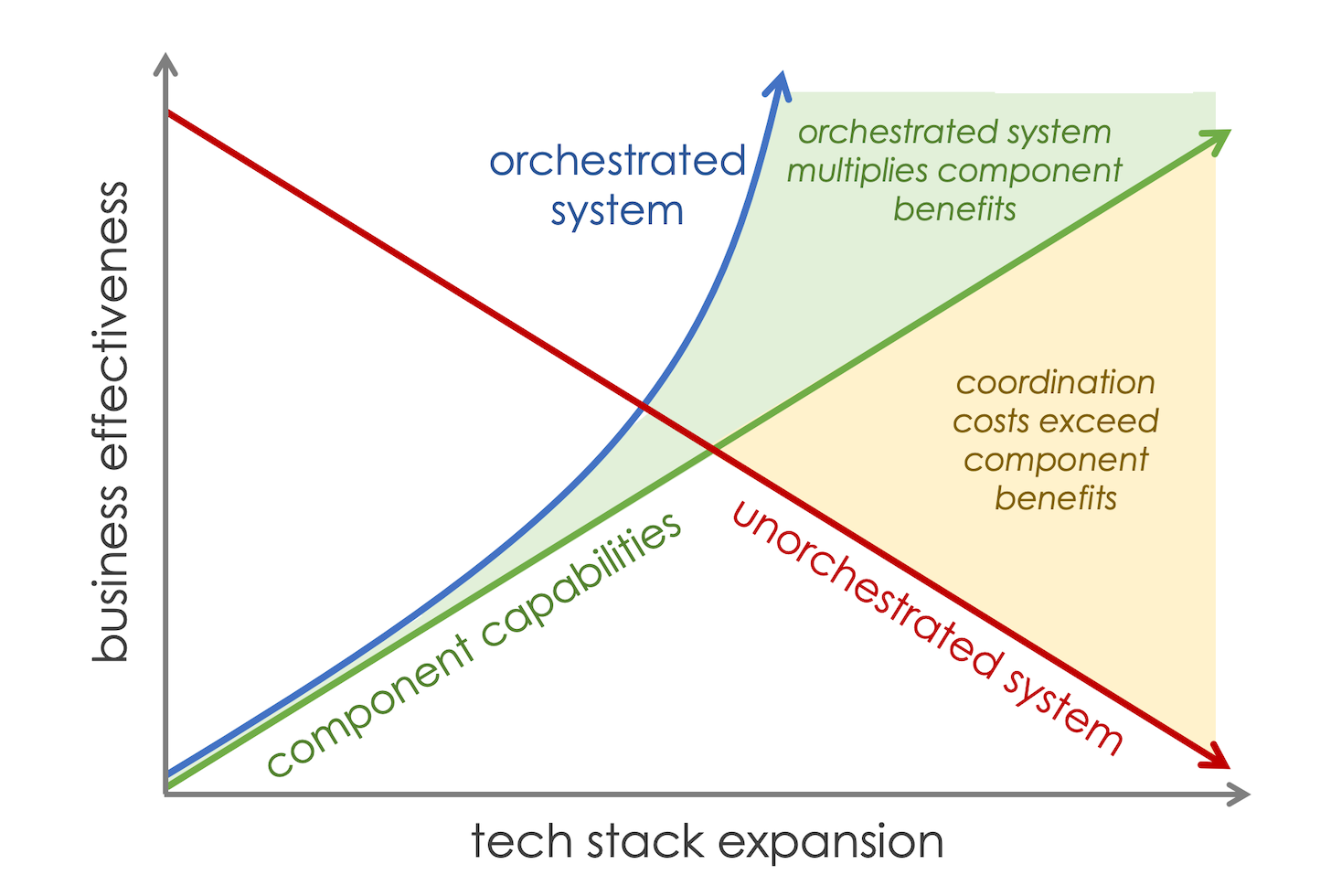
Ever see the miniseries From the Earth to the Moon? Great story about the Apollo moon missions. I’m pretty sure it was in one of those episodes that I most remember the impactful difference between “unit tests” and “system tests.”
Getting people on the moon required a huge number of different component technologies, many each breakthrough innovations on their own. But success depended on how well the entire system worked. All those components needed to be connected and coordinated. This was real systems integration, decades before we ever faced such challenges in day-to-day marketing.
Spoiler alert: getting the whole complex system to work right is really hard.
Marketing might not be rocket science, but as it has expanded through hundreds of digital apps, algorithms, agents, activities, automations, analyses, etc. — all moving parts in our Big Ops environment — the challenge of systems integration in our discipline has grown exponentially.
Latest Stats on Tech Stack Growth
Last month, writing about when martech stacks become too complex — an assessment that is relative to your martech organizational maturity — I mangled adapted Occam’s Razor to state Martec’s Razor: other things being equal, the simplest stack is best.
But to riff on Einstein too, a stack should be as simple as possible but no simpler. Refusing to add components that are essential to your company’s competitiveness isn’t a winning strategy. It would be like the Apollo missions ditching their guidance technologies because they were too hard to integrate. “Just kinda eyeball it, guys. It’s the big gray rock in the sky. You can’t miss it.”
The competitive drive for digital capabilities is why companies keep adding new SaaS apps to their stacks — even at the same time that they are removing others that are redundant or underutilized.

A new 2023 State of SaaSOps report published by BetterCloud, a more upmarket SaaS management platform, gives us some updated data on the average size of tech stacks at mid-market and enterprise companies.
The numbers, shown above, are more modest — and I believe more rationalized — than I’ve seen in similar reports in years past. Companies have ~130 SaaS apps on average. Within BetterCloud’s longitudinal data set, they’re still showing year-over-year growth from 2021. But my impression is that growth is leveling off.
Still, ~130 SaaS apps isn’t exactly major “consolidation” the way some people have been predicting it. These are rich, heterogeneous stacks. And that fundamental structure doesn’t seem to be changing.
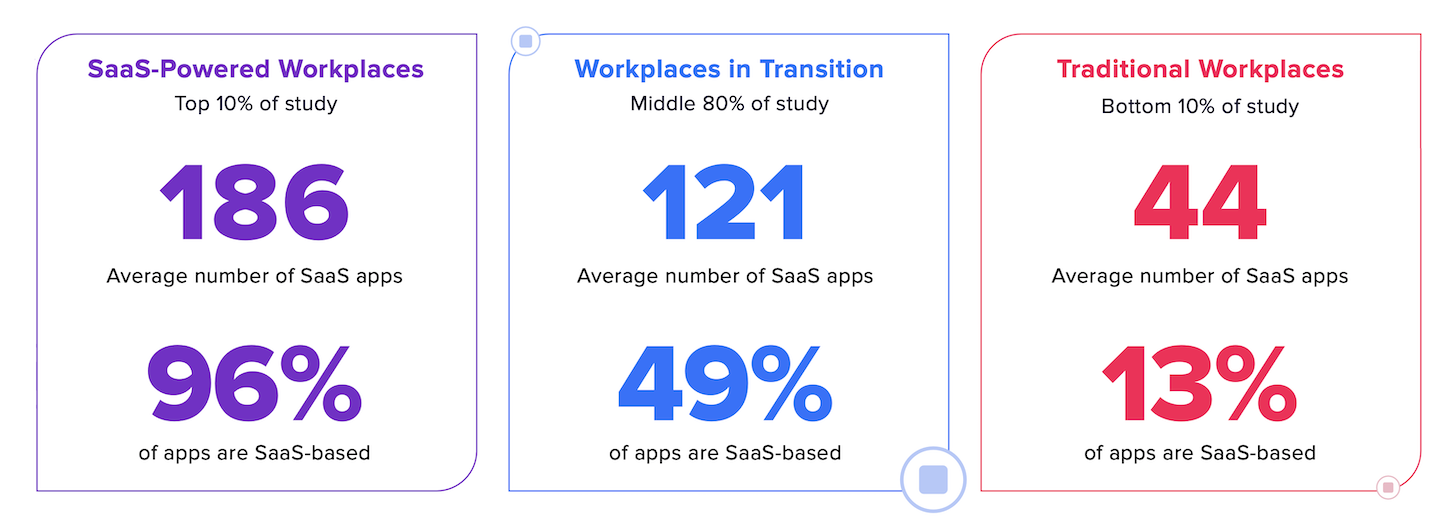
In fact, if you look at companies’ tech stacks through the lens of their relative SaaS maturity — a different cut of the data from BetterCloud’s report — you will see that SaaS-powered workplaces, which have almost all their apps in the cloud instead of on-prem, have more like ~186 SaaS apps on average.
If we make the rough approximation that such SaaS-powered workplaces are further along in their “digital transformation” than others — I know, that’s a debatable generalization — we should expect that companies who are further behind will catch up. And will likely adopt more SaaS apps in the process.
Bringing “Shadow IT” into the Light
From a survey of 743 IT professionals in the BetterCloud report, 58% of them expect IT’s budget to grow in 2023. Where are they planning to invest? These are their top priorities with regard to SaaS management:
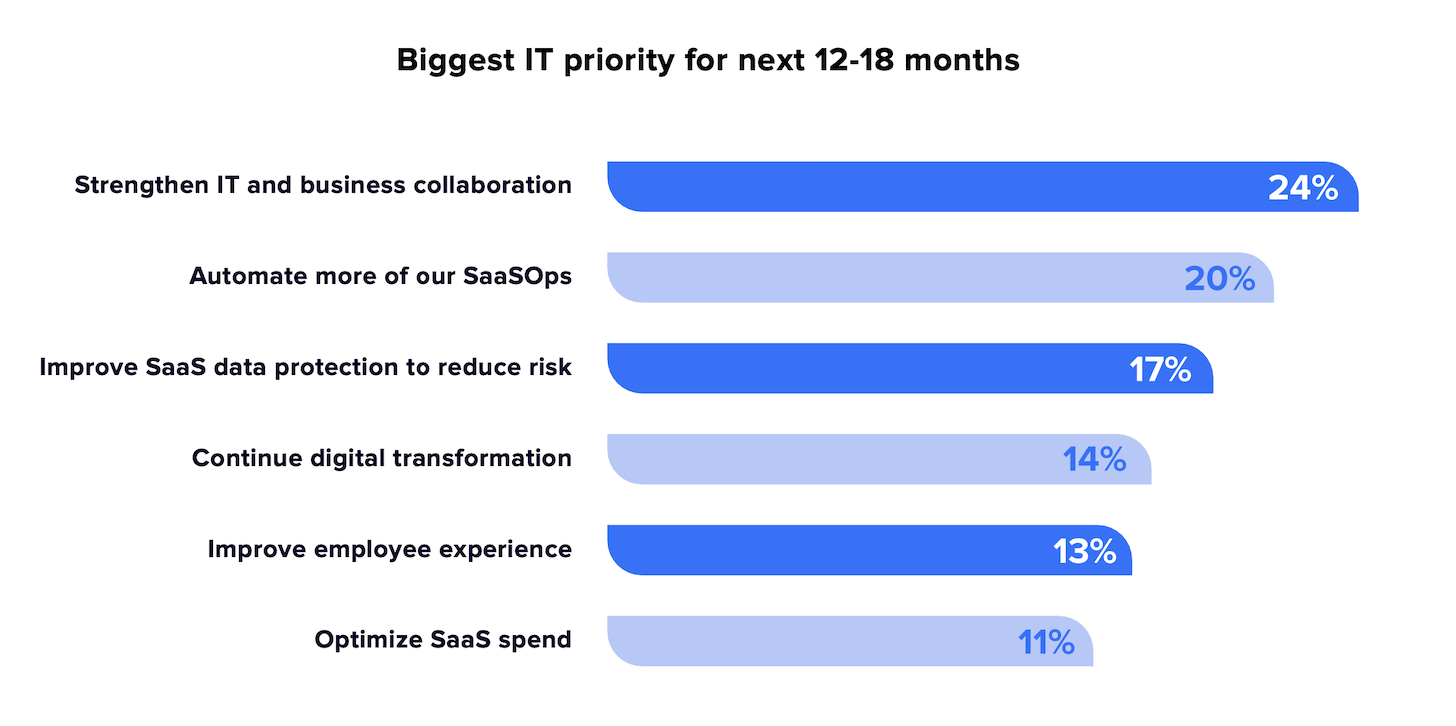
Optimizing SaaS spend — which is often code for “consolidating apps” — is in the list. It’s important. But other priorities are deemed more important. The top one: strengthen IT and business collaboration.
A big part of that mission is enabling different business teams to use the apps that they deem most effective in their work. Not in insulated silos outside of IT’s purview — what has historically been known as “shadow IT.” But with the right level of IT governance helping to address real problems and security risks with unmanaged (or undermanaged) apps.
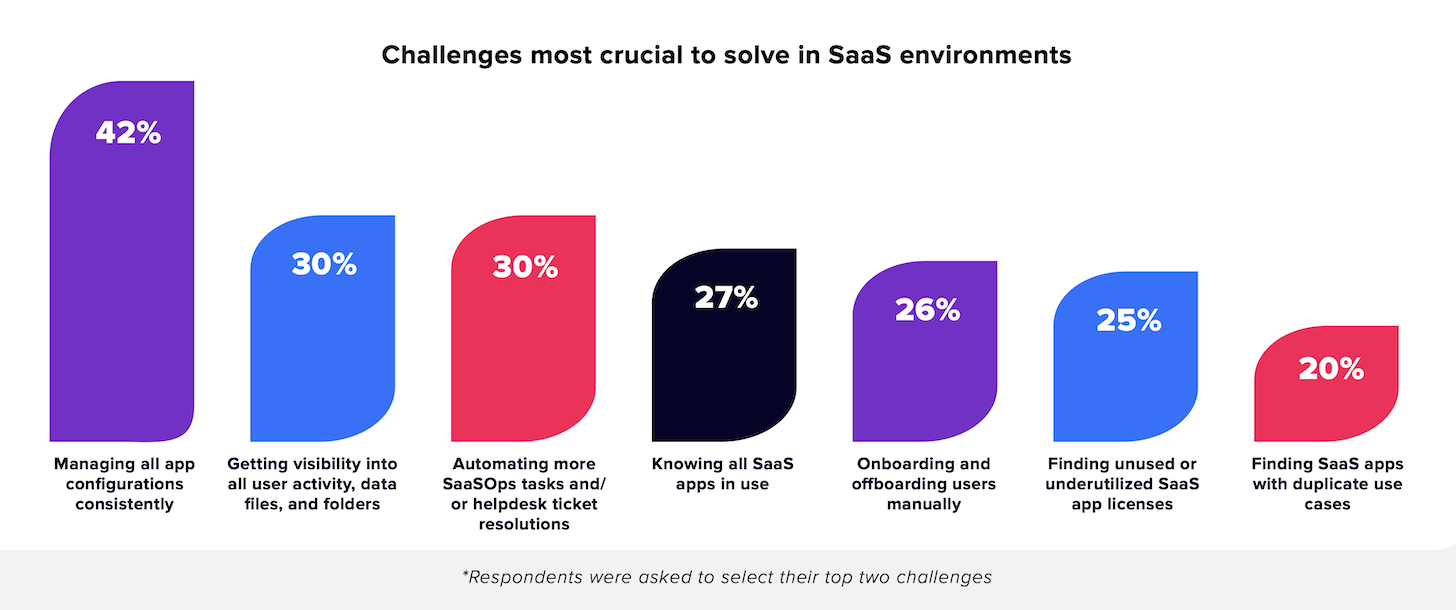
Even the most independent marketing ops/martech professional will acknowledge that solving these challenges in a consistent way across the business is A Good Thing. Leaning into collaboration with IT on proper “SaaSOps” management can improve the lives (and careers!) of marketing ops teams — without hindering the growth and evolution of new martech capabilities.
Getting the martech stack connected into the fabric of the rest of the company’s broader tech stack helps overcome those governance challenges. But it also opens the door to deeper collaboration between marketing and other teams in sales, customer success, product, operations, etc.
Orchestration > Integration > Consolidation
For many years now, “integration” has been a hot-button issue in martech. MarTech.org’s Martech Replacement Survey published back in July shows that better integration was the second most common reason (24%) people decided to swap out an existing martech app. And when they picked the replacement app, integrations and open APIs were an important factor for 54% of those buyers.
The State of Martech 2022/23 report recently published by the Learning Experience Alliance (LXA) reinforces this fact: inadequate technology integration is still the main barrier to marketing technology investment and use today.
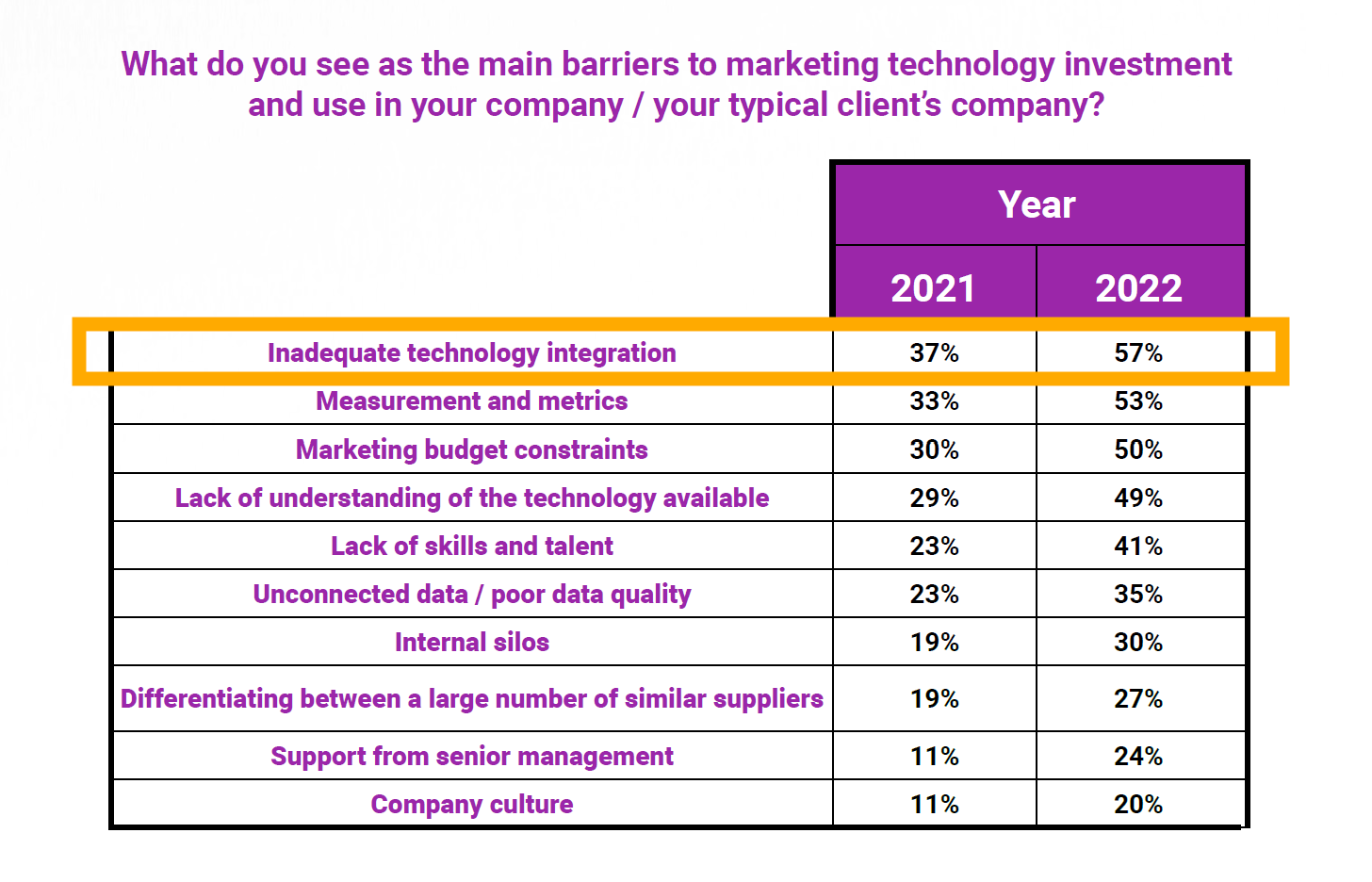
This persistent drive for better integration has become a strong motivator in the martech industry. It’s why the 2nd Age of Martech, which we’re now living in, is defined around platform ecosystems.
But integrating your tech stack is only the first step.
To really unlock the power of your apps and platforms, you need to orchestrate business processes across them. This requires both (a) visibility into these apps and (b) the ability to automate across them — two of the focal points for SaaSOps.
Such cross-app automation may be conducted by domain-specific platforms, such as CRMs at the center of customer-facing workflows. Or by enterprise automation platforms that span the entire business. (I think of these as vertical aggregation and horizontal aggregation patterns, respectively, in matrixed tech stacks.)
Digital orchestration is defined by the ability to reliably run app-spanning and team-spanning automations. It’s a higher order effect beyond task-level efficiency of classic automation, opening the door to new process innovation. The hard boundaries of intracompany silos start to become permeable and flexible in exciting new ways.
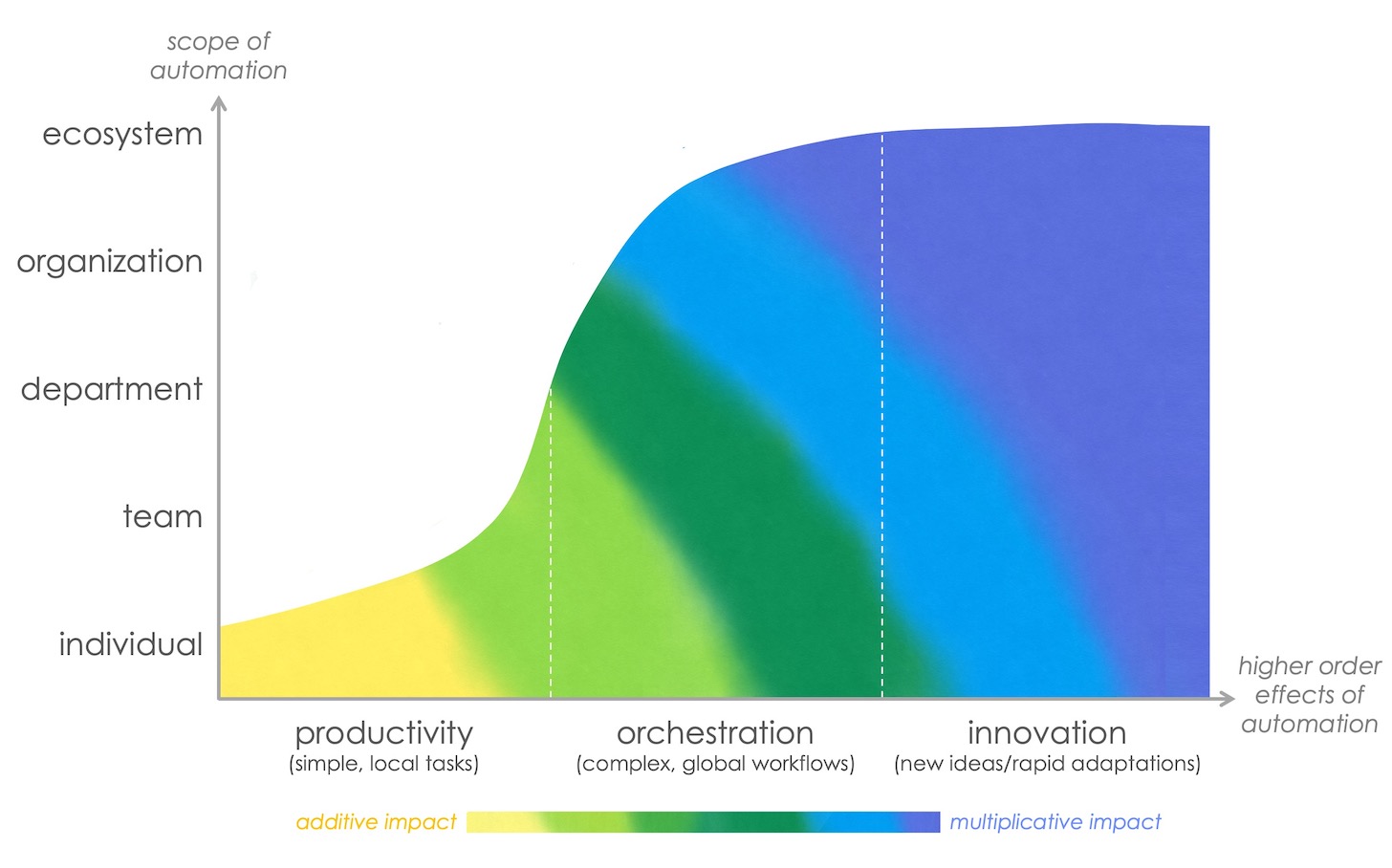
Such coordinated execution isn’t limited by the (virtual) walls of your company either. In the infinitely adjacent digital ether, we can now orchestrate activities with our second-party partners too. It’s why ecosystem tech is now one of the hottest categories in martech. And it’s why partner ops, the forgotten ops, is suddenly thriving.
Which brings me to the point of the graph at the top of this post.
A big reason why sprawling tech stacks can be so frustrating is because the costs of coordination across unintegrated and unorchestrated apps exceed the benefits those specialized apps offer on their own. Each app may be brilliant at what it does in isolation. But the whole point of a digitally transformed business is that our digital activities are not isolated, but connected together.
Wrangling those interdependent connections ad hoc or manually quickly becomes a mess.
To make a large stack effective, you need the ability to orchestrate the system as a whole. It’s partially a technical challenge, which is being addressed by a wide field of cloud-based automation and aggregation technologies. But it’s also an organizational challenge, which requires new thinking and cross-team collaboration.

Consolidation in your tech stack is good — as simple of a stack as possible, but no simpler. Integration across your tech stack is important too, as a necessary but not sufficient step towards orchestration. But orchestration is the rocket engine.
This is marketing’s “system test” on our journey from the earth to the moon.
